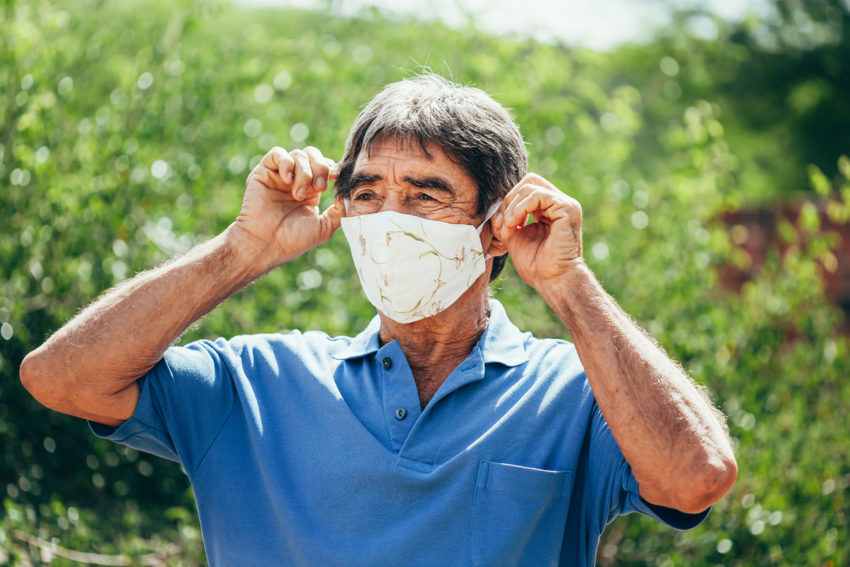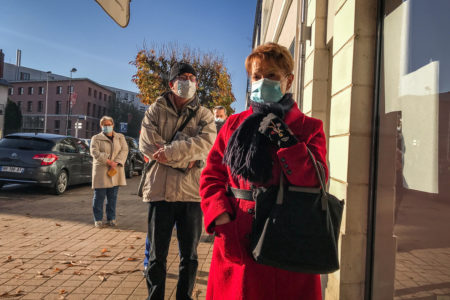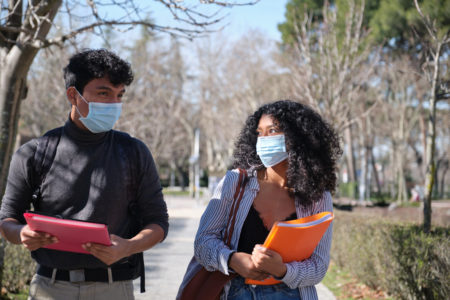
Share On Social!
Over the first half of the COVID-19 pandemic last year, gains made in life expectancy dropped — especially among Latinos and other people of color.
As a whole, US life expectancy fell by a year, dipping from 78.8 to 77.8 years from 2019 to June 2020, which is the lowest average since 2006, according to CDC research.
Latinos, who have experienced some of the harshest COVID-19 impacts, saw a drop in life expectancy of 1.9 years. Latino life expectancy fell from 81.8 to 79.9 years.
“It was disturbing to see that gains that have been made for the Black [and Latino communities] and decreasing the gap between life expectancy for African Americans and white Americans over the past six years had come to a halt,” Dr. Leon McDougle, president of the National Medical Association, told USA Today.
How and Why is Latino Life Expectancy Falling?
Life expectancy has been slowly rising in the recent past, even for people of color.
But the COVID-19 pandemic, which is worsening historical health inequities and devastating communities of color, is reversing that progress.
Not only did Latino life expectancy see a significant drop, Black Americans also suffered a plunge. Their life expectancy went from 74.7 years in 2019 to 72.
“This has been an issue of concern for a while, that we weren’t making progress and we were sliding a little bit backwards,” Michal Engelman, an associate professor of sociology at the University of Wisconsin-Madison, told USA Today. “After a couple of years of worrisome declines, we dropped as a country a whole year just in the first half of 2020.”
Still, while some might think that the drop in age isn’t all that important, this change will have long-term impacts, according to the experts.
“A one-year drop, while it sounds small, it is notable. What is really the loss here that these are individuals, some of whom had many productive years of life left and we’re losing ground instead of gaining ground,” said Mercedes Carnethon, vice chair of preventive medicine at Northwestern University Feinberg School of Medicine. “We’re losing ground on life expectancy against the backdrop of better medical therapies, the opportunity for prevention. Despite all of that, we’re seeing losses in life that are disproportionately felt by different members of our community.”
How Has the Latino Community Suffered During COVID-19?
The pandemic impact on Latinos has been devastating. Latinos are more likely to be hospitalized with COVID-19 and have high case and death rates.
The reasons are worsening health inequities in many areas.
For example, COVID-19 is making it more difficult to access food. One in 10 Black and Latino families are struggling with food insecurity—being without reliable access to a sufficient quantity of affordable, nutritious food—according to a recent report from the Census Bureau.
In another area of harmful coronavirus impacts includes new research has found a historical 21% spike in drug overdose deaths amid COVID-19, disproportionally among Latinos. 
Educational systems are affected, too, and childhood trauma remains an issue. Transportation is impacted, as is housing and homelessness.
Financially, things aren’t looking much better for Latino, either.
“Over the last several decades, Latinos have represented the engine propelling the U.S. economy,” writes UT San Antonio Professor Rogelio Sáenz. “While people throughout the country suffer from the massive assault of the pandemic, Latinos are disproportionately impacted, facing high levels of job loss over the last couple of months.”
Healthcare access remains an issue amid the pandemic.
For example, despite movement in COVID vaccinations in the US, Latinos are also not faring well in getting the shot, although leaders are working to build trust.
These are worrying trends for life expectancy, according to Elizabeth Arias, a health scientist for the CDC’s National Center for Health Statistics and lead author of the life expectancy data.
“This is a big departure. We haven’t seen anything this large since the first half of the 20th century, when infectious disease was much more common,” she said. “Those are very large disparities, and it reflects that the pandemic affected these two minority groups much more than the majority population. So they experienced the bulk of the mortality.”
Experts worry life expectancy will continue to drop.
Another recent study predicts that Latino life expectancy will decline 3.1 years, several times the 0.7-year reduction among Whites.
“Latinos, who have consistently experienced lower mortality than Whites (a phenomenon known as the Latino or Hispanic paradox), would see their more than 3-y[ear] survival advantage reduced to less than 1 y[ear],” according to the study.
What Can I Do?
The main point this data illustrates is the need for immediate action.
While some officials are trying to make progress, more needs to be done.
“COVID revealed the social fault lines that preexisted, and planted its seeds on those social chasms that preexisted. Take a city like Chicago, where prior to COVID there was a black-white life expectancy gap of 8.6 years,” said Dr. David Ansell, senior vice president for community health equity at Rush University and the author of “The Death Gap: How Inequality Kills,” which will be updated and republished this May.
Explore More:
Health EquityBy The Numbers
142
Percent
Expected rise in Latino cancer cases in coming years



